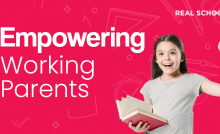Reading Activities for Kids: Why Reading is Important for Kids


Language is the most powerful element that humans have. Reading is one of the most enjoyable and effective ways to master this tool. Reading is a habit that, if instilled at a young age, aids in brain growth and develops imagination.
It is never too early to start reading to a youngster and developing this habit. It’s a once-in-a-lifetime opportunity. Looking for ideas for kids reading activities? Read on to explore some of our hand-picked reading activities for kids.
Learning courses for your kids! Get free trial here


Reading Activities for Kids
Try out these fun reading activities for kids:
Kids Activities: The Treasure Hunt
The Treasure Hunt is one of the best kids reading activities. Begin your child’s journey into the magic of reading by presenting him to the joy of solving a puzzle and receiving a prize.
Rather than turning reading into work, let your child discover how important reading is in all aspects of their lives. Hide his toys, old and new, as well as a few candies or gifts, in various sections of the home. On a sheet of paper, jot down simple hints about those sites. Make your youngster read it aloud, respond to it, and then look for the hidden object.
Requirements: A bunch of paper cards, pencils, various objects or gifts.
Kids Activities: Word-Based Snakes And Ladders
Here’s a new twist on your child’s favourite game: replace the numbers with simple phrases.
This variation also includes a specific board that may be purchased. Alternatively, you can use a pen to create simple words that your youngster can read on each of the board’s 100 squares. Play the game exactly as you would on any other day.
As he crosses the squares, your youngster can count them and pronounce the words aloud. Your youngster can learn to read the words by visual recognition by referring to different regions of the board.
Requirements: A snakes and ladders board, game-related items, a felt pen
Also Read: National Symbols of India for Kids: Amazing Names and Facts to Learn About India
Kids Activities: Guess The Word
This game needs more participation on your part, yet it immediately helps the child understand hard problems. Either use a dictionary or write different words on flashcards and place them all in a container. Allow your youngster to choose a word and tell you how many letters are in it.
You’re now asking him questions that can only be answered with a “yes” or a “no.” Ask questions like “does the word have vowels?” or “is it a bird?” so that your youngster needs to ponder before answering your inquiry.
Requirements: A dictionary, paper cards, a pen
Learning courses for your kids! Get free trial here
Kids Activities: Young Scrabble
As a parent, you’d have fond memories of playing Scrabble with your family members and friends. Create a version for your child based on the game’s main principle.
Give your kids a wider range of letters to utilize instead of the standard seven. Make sure there are enough vowels. Ask your kid to make as many words as he can out of those letters.
You can create a type of guiding list by beginning with three-letter words and then progressing to words with more characters. Allow him to jot down every word he says on a sheet of paper.
Requirements: Letters from the scrabble set, a pen and paper
Kids Activities: Connecting Letters And Sounds
The association of letters with common speech sounds is fundamental to the creation of speech. Use this game to connect the correct ones.
To begin, divide the board into two columns. On one side, make a bunch of rimes, which are typically letters like b, h, m, y, l, k, and so on. Fill in the blanks with as many occurrences as you can.
These include everything from an, on, at, or a variety of other words. Assign one coloured highlighter to each rime and link them to all onsets as feasible in order to make legible words. Allow him to say the words aloud once he has connected them.
Requirements: A large whiteboard, markers of various colours
Kids Activities: A Word Flip Book
Experimenting is an excellent approach for children to discover and learn new things. A flipping book game for word reading can do the same thing.
Preparing the diaries entails writing the letter on each page. When all of the diaries have a character on each sheet, give your child a term and let him work out how many characters are in it.
Based on that, he should use those diaries as flip pages, arrange them sequentially, and flip each one to the character that can spell the word when they are read together. You can begin with basic words and work your way up to more difficult ones that will have him scratching his head.
Requirements: Tiny flipbook diaries, a pen
Learning courses for your kids! Get free trial here
Why Reading is Important for Kids?
It Broadens Their Vocabulary
They may come across terms they have never heard before while reading, motivating them to investigate what they mean. As a result, they incorporate it into their vocabulary.
It Improves Their Performance
Practice makes you perfect. The easiest approach to improve your reading skills is to simply read more!
Also Read: National Symbols of India for Kids: Amazing Names and Facts to Learn About India
It Promotes Independence and Self-esteem
They gain a sense of autonomy as they realize they no longer need to depend on their parents to read to them. They can begin to grasp the world on their own by reading.
It Protects Them
Words appear on traffic signs and on caution labels. it teaches children to recognize when something has the potential to hurt them.
It Aids People in Making Sense of Their Surroundings
As kids learn to read, they will be able to decipher what things around them say, such as signs, stickers, and labels. it allows students to comprehend what is what and what role it serves.
It Contributes to Their Future Academic Achievement
To be able to advance in school, a youngster must be able to read. it is required to follow the directions on the test and to comprehend or answer the questions.
It Broadens Their Horizons
A youngster can begin to imagine where the people are as they read. They might even invent their own small planet. Reading helps them develop their imagination by pushing them to imagine what the hero looks like and who they are.
It Keeps Them Entertained
It provides kids something to do, especially when they can start reading chapter books without images, which forces them to really delve into their imaginations and, as a result, really get into the book
It Helps Them Improve Their Grammar
They may see how the author constructed their sentence structure and grammar through reading. This can also help them develop their communication skills because they can use clues like punctuation to decide how it should be read.
It Increases Their Writing Abilities
Reading enhances their vocabulary, language, and grammatical skills, which in turn improves their writing skills.
It is necessary for almost everything in life, from baking to driving to simply getting through school. It is critical to begin teaching your child the significance of reading at an early age so that they will grow to cherish their ability to do so and practice it frequently.
Learning courses for your kids! Get free trial here
Conclusion
Aside from generating shared time together, including regular reading time into your child’s calendar has additional benefits: better discipline and attentiveness. Young children rarely stay still for lengthy periods of time, and it is sometimes difficult to persuade them to focus.
However, if you introduce frequent reading to your kids, you may see a shift in their behaviour. Toddlers may wriggle and become sidetracked during storytelling time at first, but they will gradually learn to sit still for the duration of the book.
Visit The Real School Of Montessori to explore some more kids’ activities.
Also Read: What is Robotics for Kids? Introduction of Electronics Lessons for Kids
Recent Posts
What are the Advantages of Online Teaching at The Real School?
In the article -"What are the Advantages of Online Teaching at The Real School?" we…
What is the Full Form of School?: Unveiling the Acronym
The term "school" carries profound significance in the realm of education, representing more than just…
What is Math Full Form?: Cracking the Code
Mathematics, often referred to as "Math," is a subject that elicits various reactions from students…
What is Full Form of Homework?: Decoding Academics
Homework, an integral part of the academic journey, often raises questions about its purpose and…
What is Full Form of Teacher?: Demystifying Education
In the intricate tapestry of education, teachers stand as the pillars shaping the intellectual and…
What is Real Education?: Discovering Its Essence and Impact
The concept of real education is evolving, transcending traditional views that equate it solely with…


